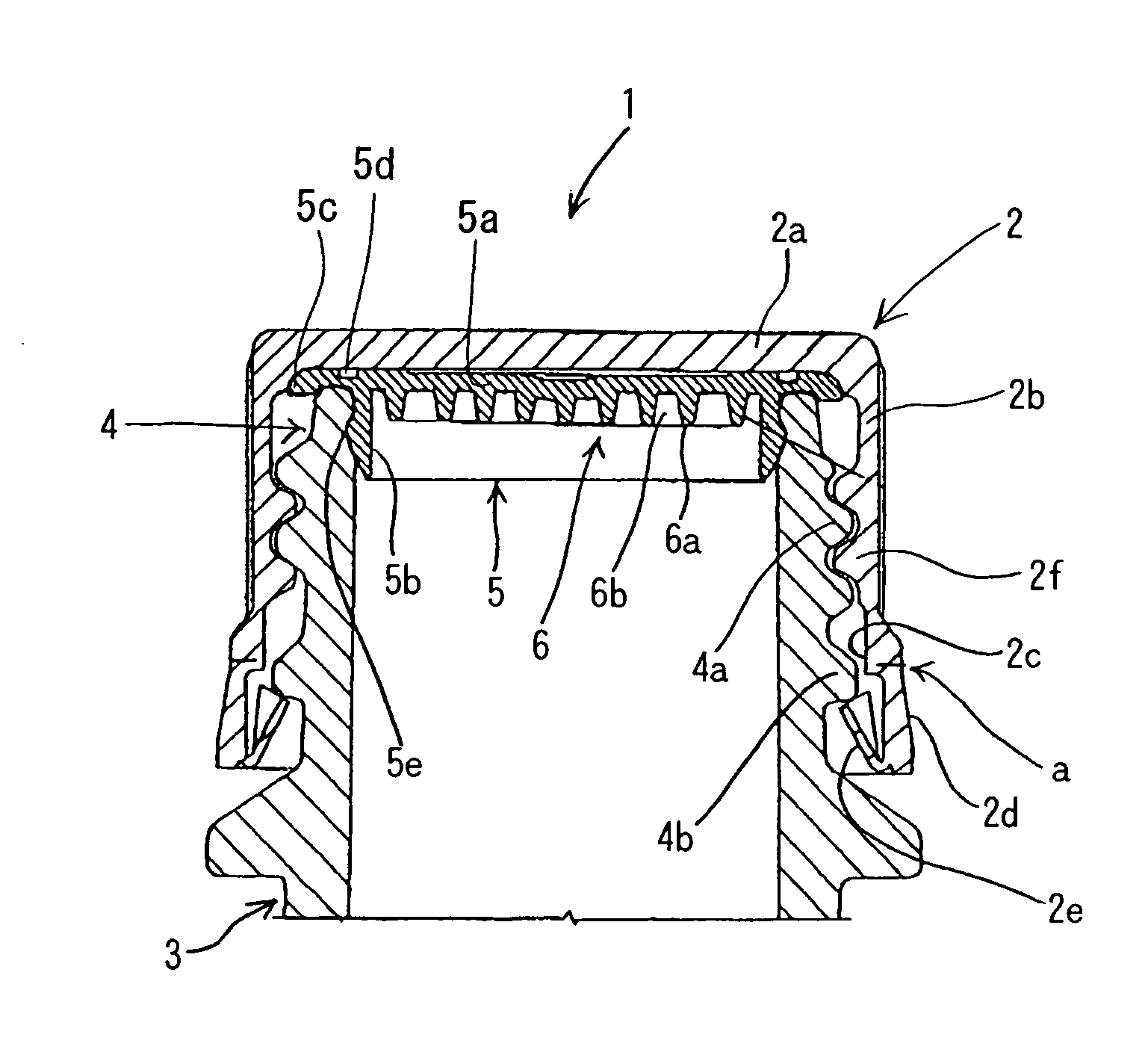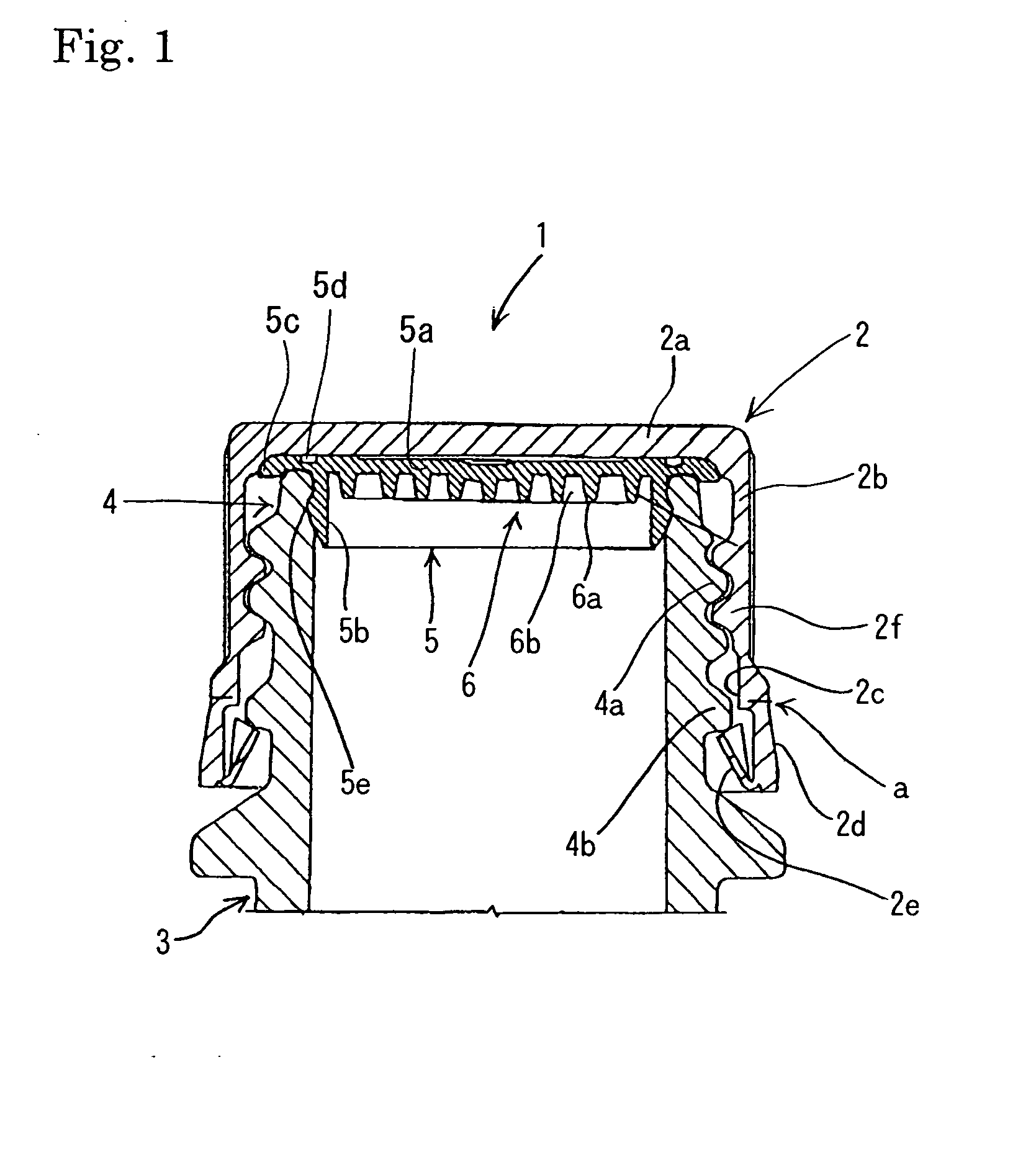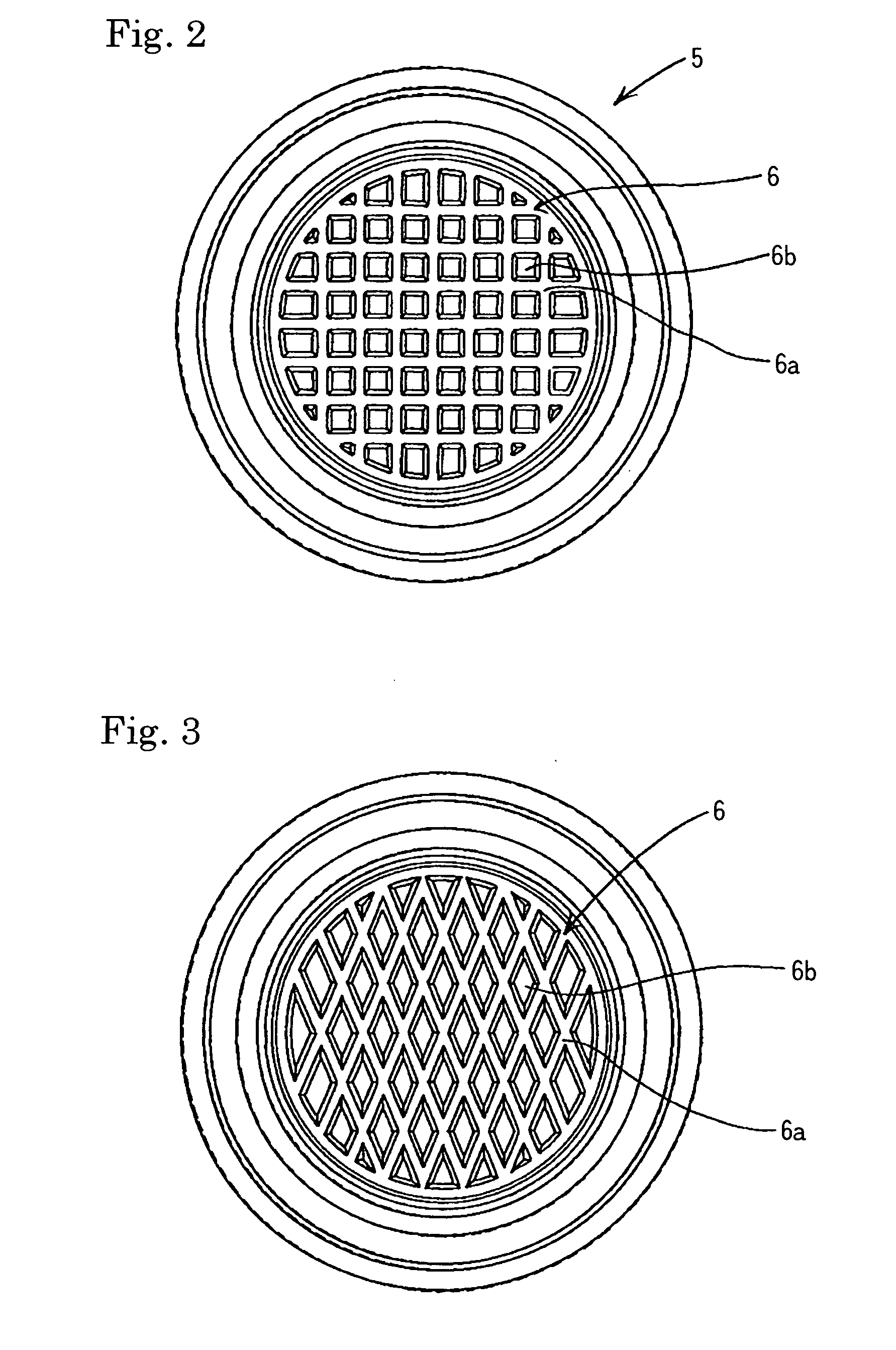[0029]In the invention according to Claim 1, problems such as moldability of an oxygen absorbent-containing resin, dispersibility of an oxygen absorbent, stability of oxygen absorbing performance, peeling of the oxygen absorbent, decrease of sealability of a sealing part that seals a container by abutting on a container opening part can be solved by making the particle
diameter of the oxygen absorbent specific and dispersing and molding a specific amount of such an oxygen absorbent.
[0030]That is, since the oxygen-absorbing resin composition according to Claim 1 is obtained by dispersing and blending an oxygen absorbent containing 20% or more of particles having a particle
diameter of 1000 μm or less at a ratio of 20% or less to a base resin, the following effects can be obtained. That is, when the ratio of particle diameter of the oxygen absorbent dispersed and blended to a base resin becomes large, various troubles occur in which the moldability of the oxygen-absorbing resin composition deteriorates, a stable oxygen absorbing performance is hardly obtained because the dispersion of the oxygen absorbent is bad and variation occurs depending on the products, the oxygen absorbing performance cannot be improved because the entire surface area of the oxygen absorbent becomes small, and peeling and separation of the oxygen absorbent from the base resin easily occur. However, in the present invention, by making the particle diameter of the oxygen absorbent specific and dispersing and molding a specific amount of such an oxygen absorbent, the stable oxygen absorbing performance can be obtained in which the moldability of the oxygen absorbent-containing resin is good, the dispersibility of the oxygen absorbent is good, and variation does not occur depending on the products, and peeling and separation of the oxygen absorbent from the base resin hardly occur. Thereby, in the present invention, an oxygen-absorbing resin composition that is superior in oxygen absorbing performance, quickly absorbing oxygen remaining in the container after sealing, and in which the preservability of the contents is good, can be obtained.
[0031]Further, in the case of forming the oxygen-absorbing resin composition as a sealing part that seals the opening part of the packaging container such as a beverage bottle container so that it can be opened / closed, when THE ratio of the oxygen absorbent dispersed and blended to a base resin is more than 20%, the rigidity becomes too large and its sealability decreases. However, since the ratio is 20% or less in the oxygen-absorbing resin composition in Claim 1, the increase of the rigidity can be suppressed and its sealability can be maintained certainly.
[0032]The invention according to Claim 2 has a configuration in which an oxygen absorbent containing 20% or more of particles having a particle diameter of 1000 μm or less is dispersed and blended at a ratio of 20% or less to a base resin (referred to as a configuration of preceding stage below) and a water-absorbing material with an HLB value of 1.5 or more is dispersed and blended at a ratio of 20% or less to a base resin (referred to as a configuration of succeeding stage below). Then, since the configuration of preceding stage is the same as the configuration of the invention according to Claim 1, the above-described effects obtained by the invention according to Claim 1 are obtained in the invention according to Claim 2, and the following effect can be obtained by the configuration of succeeding stage. That is, when the HLB value of the water-absorbing material dispersed and blended to a base resin is a small value that is less than 1.5, not only water-absorbability of the oxygen-absorbing resin composition but also promotion of the oxygen absorbing effect becomes insufficient. However, since the HLB value is specified to 1.5 or more in the present invention, the oxygen absorbing effect can be promoted sufficiently, and hereby, the oxygen remaining in the container after sealing is absorbed quickly, and preservability of the contents of the container becomes good. Further, when the ratio of the water-absorbing material dispersed and blended to a base resin is larger than 20%, the oxygen-absorbing resin composition becomes mechanically fragile. However, since the ratio is specified to 20% or less in the present invention, it does not become mechanically fragile, and therefore it is easily manufactured and becomes good in any points such as durability and
usability.
[0033]Further, because an oxygen absorbent having low compatibility with a base resin can be used, not to mention an oxygen absorbent having high compatibility with a base resin in the invention according to Claim 2, an oxygen-absorbing resin composition that in superior also in points of versatility and applicability can be obtained.
[0034]In the invention according to Claims 3 and 4, since the oxygen absorbent-containing resin layer has a large number of lattice-shaped convex parts and / or concave parts inside the container, the following effect can be obtained. That is, when the oxygen absorbent-containing resin layer has a planar shape, the surface area is small and sufficient oxygen absorbing performance is difficult to obtain. However, since the oxygen absorbent-containing resin layer in the present invention has the above-described shape, its surface area is large, not only the oxygen absorbing performance is improved greatly but also the strength of the sealing part itself increases, and the moldability is good since the dome phenomenon due to the inner pressure of the container can be prevented certainly from occurring, and the oxygen absorbent-containing resin layer has a shape that is appropriate for the molding method such as injection molding in which the molding is performed by pouring the resin material uniformly, even in the case that the content of the container is a
carbonated drink, etc., and the inside of the container is in a pressurized state for example.
 Login to View More
Login to View More 


